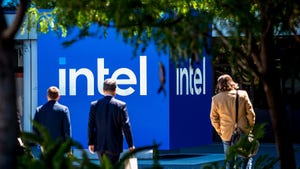New From Amazon: Spot Pricing on Cloud ComputingNew From Amazon: Spot Pricing on Cloud Computing
Amazon Web Services has introduced Spot Instances, a new approach to pricing and purchasing computing capacity on its EC2 cloud computing platform.
December 14, 2009

clouds
Amazon Web Services has introduced Spot Instances, a new approach to pricing and purchasing computing capacity on its EC2 cloud computing platform. With Spot Instances, customers bid on unused Amazon EC2 capacity and run those instances for as long as their maximum bid exceeds the current spot price, which changes periodically based on supply and demand.This type of dynamic pricing will allow some customers to save money by running applications only when spot prices fall below a designated price point, while also allowing users to quickly run large jobs by outbidding other customers for available capacity.
Large Scale Market Pricing
"This is the first step on a large scale towards 'market pricing' for computing based on offer and demand," writes Thorsten von Eiken on the RightScale blog. "I know many people have been dreaming about something like this and a few startups have started to offer a compute market of some sort. But with Amazon’s offering it is now available on a large scale to anyone."
There's a lot of focus in today's announcements about how Spot Instances can help customers save money. But this refinement provides tools for Amazon to more effectively monetize capacity on its infrastructure. As spot pricing gains in popularity - as it surely will - Amazon could get more revenue and mileage out of its infrastructure, especially during hours where there currently is low demand (and thus lower spot pricing). It could also build in pricing power for Amazon at times when it runs shy on capacity, a scenario in which buyer competition for limited resources could drive prices higher.
But thus far Amazon's strategy has been to reduce prices whenever possible to boost adoption of its cloud computing services, especially by enterprise customers looking for the most bang for their computing buck in a difficult economy. Amazon's mighty infrastructure - backed by its growing network of data centers - is a competitive differentiator.
"Spot Instances are an innovation that is made possible by the unparalleled economies of scale created by the tremendous growth of the AWS Infrastructure Services," said Werner Vogels, Amazon's CTO, writing at All Things Distributed. "The broad Amazon EC2 customer base brings such diversity in workload and utilization patterns that it allows us to operate Amazon EC2 with extreme efficiency. True to the Amazon philosophy, we let our customers benefit from the economies of scale they help us create by lowering our prices when we achieve lower cost structures. Consistently we have lowered compute, storage and bandwidth prices based on such cost savings."
Pricing History Provides Guidance
Vogels said Amazon will provide a history of the Spot Price for each instance type in each availability region via the AWS Management Console. "Spot Price history is a valuable tool in helping customers use what-if scenarios to determine right pricing level for a particular workload," he said.
Amazon cloud evangelist Jeff Barr noted that heavy use of spot instances could require more sophisticated management of a customer's EC2 capacity to account for pricing fluctuations. "From an architectural point of view, because EC2 will terminate instances whose bid price becomes lower than the Spot Price, you'll want to regularly checkpoint work in progress," Barr writes. "Many types of work are suitable for this incremental, background processing model including web crawling, data analysis, and data transformation (e.g. media transcoding). It wouldn't make much sense to run a highly available application such as a web server or a database on a Spot Instance, though."
Craig Balding at Cloud Security points out one potential weakness: the potential for the dynamic pricing model to be exploited by denial of service attacks, which could lay the groundwork for black hats to manipulate pricing on AWS or launch a resource-wasting economic DOS.
Amazon's press release included examples of the use of AWS spot pricing in applications for pharmaceutical companies like Eli Lilly, Varian Inc. and Pfizer and in batch processing of market analytics for financial services clients of Clarity Solutions.
"As customers continued to expand their use of AWS, they started asking if additional pools of capacity were available, even if only for a few hours at a time. Some customers were looking to reduce costs in exchange for being flexible as to when they run their application; others told us they were willing to pay more when they had urgent, high volume needs,” said Peter De Santis, General Manger of Amazon EC2. “Because of the dynamic nature of supply and demand in the Amazon EC2 environment, we developed Spot Instances to let customers take advantage of our unused capacity while specifying a price they are willing to pay."
Will the market for pricing of cloud computing capacity look like the financial markets? Joe Weinman of AT&T looks at potential pricing innovation and strategies in Hedging Your Options for the Cloud over at GigaOm.
About the Author
You May Also Like







